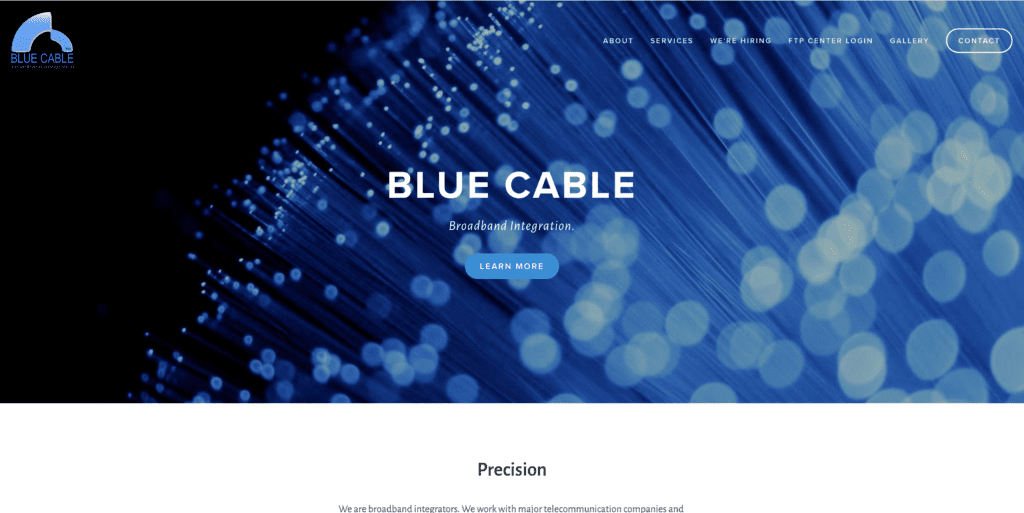Unlocking Agile Success: The Power of User Personas in Project Development
In the pursuit of a more customer-oriented organisation, a paramount focus must be placed on constructing robust user personas. Regardless of your industry, your organisation’s persona plays a vital role. These personas serve as a repository of crucial information about your consumers, encompassing their usage patterns and interests.
With the aid of user personas, you can achieve several essential objectives: refining your products or services, planning for future enhancements, fostering innovation, and precisely targeting your audience. If you’re eager to create a remarkable persona, fear not; we are here to guide you through 13 easy steps that will lead you to craft an ideal persona.
What Is An Agile User Persona?
During project development, an essential approach to prioritise user experience involves crafting detailed and synthetic biographies known as “personas” for future product users. These personas represent fictionalised yet typical users of your goods, services, or website, offering insights into their preferences, traits, decision-making processes, and more. Agile personas are designed to be visual and concise, typically presented on a single page, featuring a name, social and professional details, demographics, and a photograph.
In software development projects, multiple personas are often required due to the diverse expectations and preferences of various user groups. By creating different personas that cater to distinct requirements, the agile team gains a deeper understanding of user behaviour and motivations, contributing to an improved user experience. While personas are not a magical solution, they significantly enhance the likelihood of delivering a great user experience.
Understanding user behaviour and designing the right user experience can be achieved through two common approaches. Some organisations use visualisations to illustrate the user journey, providing crucial insights into customer actions. In this context, having well-crafted personas becomes crucial to visualise the entire user journey effectively. On the other hand, other organisations rely on personas to bridge the gap between user research and design implementation, gaining valuable perspectives into user needs.
It is important to note that personas should not be confused with other tools like user roles or market segments, as they are specifically created to represent the end-users rather than buyers. By embracing agile personas as a powerful tool, organisations can develop a deeper understanding of their users and make more informed decisions throughout the project development lifecycle.
What Are The Benefits of Creating a Persona?

In the realm of agile product development, crafting personas for users offers invaluable insights into your customer base. It helps address crucial questions such as identifying your customers, understanding their personal and professional pain points, discerning their goals, and comprehending the factors influencing their buying decisions. In addition to these fundamental inquiries, building personas provides several other essential benefits:
- Understanding Specific Client Needs: Agile personas enable a profound understanding of each client’s unique requirements. This knowledge empowers your developers, product managers, and designers to create products that effectively address the genuine issues faced by users.
- Visualizing the User Story: A well-defined persona allows teams to collectively grasp and visualise the “user story.” It fosters a shared understanding of who your customers truly are and what drives them. Click here to learn more about user stories in agile.
- Tailoring Products to Customers: By delving into the needs, challenges, and behavioural influencers of your customers, personas help in creating products, content, and marketing communication that resonate best with the target audience.
- Enhancing Product Value: Insight into the desires and preferences of potential customers enables you to customise your product’s features, making it more valuable and appealing to the intended users.
- Relatable Marketing Approach: Armed with persona information, your marketing team gains a deeper understanding of customers, allowing them to craft engaging and relatable marketing strategies that directly speak to your target audience. Click here to learn how you can optimise your marketing approach with a solid marketing plan.
Incorporating agile personas into your product development process can significantly improve customer-centricity, product relevance, and overall success in the market.
The 9 Steps To Creating Your User Personas
Having recognised the valuable benefits of utilising personas, let’s explore some essential tips to create them effectively, ensuring your agile team can make the most out of their implementation:
1. Collect User Data
To develop impactful personas that empower your agile team, start by understanding why people use your product and identify the features they value most. For instance, in the context of an e-commerce site, observe user behaviour, track their current page, and inquire about their desired enhancements for future upgrades. Key questions to ask your users include gathering demographic data such as age, location, job title, and family life. Additionally, delve into their product usage patterns, reasons for choosing your product, struggles they face in life, and their life goals.
Conducting interviews, surveys, and polls can provide valuable customer feedback. Additionally, leverage free tools like Google Analytics and social media analytics from platforms such as Instagram, Facebook, Twitter, or LinkedIn Insights to gather user data. Engaging with online forums and closed groups like Quora and Reddit, where your target audience shares their pain points, can also be immensely insightful. Lastly, convene team meetings, particularly involving members who frequently interact with your target clients, to gain further perspectives and knowledge about your customer base. By employing these techniques, your agile team can create well-informed and impactful personas, enhancing your product’s alignment with customer needs and preferences.
2. Analyse Your User Data

After conducting thorough research, the next crucial step is to analyse the gathered data. It is essential to maintain an open-minded approach throughout this process, aiming to create genuine personas rather than imposing preconceived notions. During the analysis, carefully observe for both commonalities and distinctions among the users’ data. This valuable insight will enable you to identify multiple types of personas.
However, it is prudent to exercise restraint and focus on a select few personas. Keeping the number of personas manageable ensures precision and specificity in targeting, as attempting to cater to everyone may dilute the effectiveness of the personas. By striking the right balance, you can develop authentic and impactful personas that enhance your product’s alignment with the needs and preferences of your target audience.
3. Reduce The Information
The primary objective of agile personas is to foster a comprehensive understanding of your potential product clients among your team members. To ensure effectiveness, strive for simplicity and conciseness, making sure they can easily fit on an A4 size paper. Avoid overwhelming them with excessive or irrelevant details, as personas cluttered with unnecessary information can hinder usability. Instead, focus on including key attributes that inform decisions on product functionality, user interaction, and visual design.
Compose mini-manifestos that succinctly describe the core characteristics of each user persona. Prioritize the creation of user personas according to your company’s culture and objectives, tailoring them to align with your specific product or service.
Gathering scenario data is essential to help your team empathise with the users. This involves collecting information about customer stories, enabling your team to better grasp the user’s situation and needs. Ensure that the personas developed through user research accurately reflect the context of your product or service.
From the scenario list, create straightforward and relevant scenarios that depict user experiences with the product. These scenarios should explore how the team interacts with the product and how they utilise data, facilitating a better understanding of user behaviour.
Incorporate brainstorming sessions to delve into the reasons behind each scenario’s existence and what they signify for the team. By adhering to these guidelines, you can create actionable and effective agile personas that elevate your team’s product development process.
4. Create and Prioritise Personas
When prioritising personas for your agile development, consider the following essential questions:
- Who is your ideal client? Clearly identify the primary target audience for your product or service.
- Does your firm prioritise this group? Ensure that your organisation recognises the significance of serving this specific user group.
- Do you know your users’ market, industry, and business size? Gain a comprehensive understanding of the market segments, industries, and sizes of businesses your personas represent.
While individual users may respond differently to certain situations, user interface design principles can universally apply to improve overall user experience. By creating and prioritising agile personas, you can enhance user communication, uncover potential issues like data errors or performance difficulties, and demonstrate how crucial components will collaborate to address them effectively. Prioritizing personas allows your team to focus on the most relevant and impactful user groups, leading to better product development and user satisfaction.
5. Humanize The Personas
When developing an agile persona, it’s essential to keep it genuine and relatable to your team. Use real names and authentic pain points, steering clear of clichés. The inclusion of relevant information helps your team perceive the persona as a real individual. Additionally, opting for a real photo rather than a stock image for the profile picture further enhances the humanization of the persona. By imbuing the persona with real and relatable attributes, your team can better connect with and understand the user’s needs, fostering a more empathetic and user-centric product development approach.
6. Focus on a Single Benefit
Encountering individuals with multiple goals is common, and it’s acceptable to include more than one issue or benefit in a persona description. However, rather than dispersing attention across numerous points, it’s crucial to emphasise one primary problem or benefit—the core reason driving the persona’s interest in using or purchasing the product. By maintaining this focus, decision-making becomes more straightforward and intelligent choices can be made.
When multiple personas have vital goals, prioritise them accordingly, with the primary goal taking precedence at the top of the list. This ensures that essential objectives are not overlooked, and the persona descriptions retain clarity and impact. By honing in on the central motivation of each persona, product development efforts can be channelled more effectively, aligning with the unique needs and aspirations of the target audience.
7. Make The Persona Realistic
To facilitate the development team’s empathy towards customers and enable them to experience the product from the user’s perspective, it is vital to establish trustworthy personas. Here are three key ideas to achieve this:
- First-Hand User Research: Ensure that your personas are built upon authentic data gathered through direct user research, as discussed earlier. This approach guarantees that the personas accurately represent your actual customers, fostering genuine empathy within the team.
- Representative Name and Image: Give each persona a representative name and attach a genuine image to make them more tangible and relatable. This personal touch humanises the personas, making it easier for the team to connect with them on a deeper level.
- Involvement of the Development Team: Involve your development team in the creation and maintenance of the personas. Collaborating with the team allows them to contribute insights and perspectives, strengthening the personas’ relevance and reliability in guiding the product development process.
By adhering to these principles, you can establish trustworthy personas that resonate with your team, ultimately enhancing their ability to empathise with customers and design products that cater to their needs more effectively.
8. Get All Of The Team Involved

No matter how well-crafted persona descriptions may be, they serve little purpose if the intended users cannot comprehend or relate to them. To address this, it is essential to involve part of the development team in the persona creation process. Ideally, these individuals should have been part of the user research that led to the personas’ development. However, if that is not possible, it is crucial to discuss the initial persona descriptions with the team and seek their valuable feedback.
When creating persona descriptions, it is essential to avoid including unnecessary or speculative information. Instead, focus on providing concise and relevant details that resonate with the team and accurately represent the target users. Be prepared to adapt and refine the descriptions to ensure they are easily understandable and effectively communicate the user’s needs and preferences.
By collaborating with the development team and refining the persona descriptions, you can ensure that the personas become powerful tools for guiding product development and fostering a deeper understanding of the users’ requirements.
You can learn more about setting up your agile team in our analysis of the Spotify Model here.
9. Update Your Personas
In an agile development setting, as you gather insights from users and customers through prototyping and incremental product development, it becomes crucial to adapt your persona descriptions accordingly. Agile methodology allows for a more flexible approach, minimising the need for extensive early market research. Instead, you can start with provisional, good-enough personas to quickly test your essential concepts.
Based on the information gathered during this iterative process, you should continuously adjust and enhance your personas to align them better with the evolving understanding of your users and their requirements. If your product strategy undergoes significant changes or pivots, it may be necessary to rewrite your existing personas or create entirely new ones to accurately reflect the updated direction and user focus.
By embracing an agile mindset and staying receptive to user feedback and market dynamics, you can refine your personas to effectively guide your product development journey and ensure a user-centric approach throughout.
User Persona Examples
Blue Cable – Broadband

Venngage crafted the Software Architect persona for Blue Cable to offer valuable insights into how the company perceives its users:
Blue Cable’s Software Architect persona stands out due to its inclusion of key demographics and psychographics, providing the team with essential information to enhance product experiences:
Demographics encompass the user’s job title, company size, and other relevant details that offer a comprehensive understanding of how they identify themselves.
Psychographics reveal vital internal traits, such as values, personality, motivation, and interests, shedding light on the driving forces behind the user’s actions.
By incorporating both types of data, the team gains a clearer and more holistic perspective on the decision-making process of the target user. This valuable insight empowers the team to prioritise the right product initiatives effectively, ultimately leading to better product development and improved user experiences.
Clear Voice – Marketing
Among its diverse user personas, ClearVoice has carefully crafted the Marketing Director persona to ensure content and product features resonate with their ideal and existing users.
The ClearVoice Marketing Director persona delivers a comprehensive understanding of the user’s demographics, encompassing vital details such as job title, industry, salary, education, and age. These demographics play a crucial role in informing the decisions of product and design teams. Strengthening the persona profile further, including company size and growth stage would be beneficial, as different businesses often have distinct goals based on their scale and growth trajectory.
However, beyond demographics, the persona emphasises the significance of psychographic insights. Understanding the user’s values, motivations, and interests allows the team to cultivate a deeper sense of empathy and connexion with the user, ultimately leading to the creation of more effective products and content. By amalgamating both demographics and psychographics, ClearVoice equips its team with valuable tools to tailor content marketing campaigns that genuinely resonate with the Marketing Director persona and cater to the specific needs of their users.
User Persona Template
Consider using this recommended template for creating your user personas.
Click here to view the template.
FAQs
What is a User Persona in Agile?
Agile personas embody fictional attributes of individuals who are highly likely to become your product’s customers. These personas offer a comprehensive overview of your ideal customer, encompassing demographic traits like location, age, and job title, along with psychographic traits such as behaviours, feelings, needs, and challenges.
Why Use Personas in Agile?
Utilizing personas enhances the team’s understanding of the various end-users of their product, ultimately improving the value and credibility of the final offering. By creating focused, realistic, and streamlined products, development teams can easily discern what features and functionalities to include, leading to a more targeted and successful product development process.
How Would You Describe a Persona In Terms of an Agile Story?
An effective approach for capturing valuable insights about users and customers is through the use of personas. These fictional characters are crafted based on first-hand knowledge of the target group and typically include a name and a picture, along with relevant characteristics, behaviours, attitudes, and a specific goal. Employing personas allows teams to gain a deeper understanding of their audience, facilitating more informed and targeted decision-making throughout the product development process.
What Are The 7 Steps To Creating a Buyer Persona?
- Collaborate with your Team: Gather information from various departments, including sales and marketing, to create a holistic buyer persona. Their insights and expertise will contribute to a well-rounded representation of your target audience.
- Research your Audience: Conduct thorough research on your audience to gain valuable insights into their preferences, behaviours, and demographics. This data will form the foundation of your buyer persona.
- Segment your Customers: Analyze your customer base to identify distinct segments or groups with unique characteristics and needs. This segmentation will help tailor your buyer persona for specific customer segments.
- Identify Pain Points: Pinpoint the challenges and pain points your customers face while interacting with your products or services. Understanding these pain points will guide your efforts to address and alleviate them effectively.
- Identify Customer Goals: Determine the goals and aspirations of your customers when engaging with your brand. Knowing their objectives will help you align your offerings to better meet their expectations.
- Polish the Details: Refine and consolidate the gathered information, ensuring accuracy and relevance in your buyer persona. Eliminate unnecessary details and focus on the most crucial aspects of your target audience.
- Create your Buyer Persona: Utilize the collated data to construct a well-defined buyer persona. Include a name, image, demographics, pain points, and customer goals. This comprehensive representation will serve as a valuable reference point for your marketing and product development strategies.
What are The Best Practices For Creating User Personas?
To create effective user personas for an Agile team, several best practices come into play. These include conducting customer interviews, online surveys, market research, and requesting customer feedback. By engaging in these activities, team members gain valuable insights and answer essential questions, such as identifying the target users and understanding their goals and aspirations. Embracing these practices empowers Agile teams to develop more targeted and user-centric products, ultimately leading to increased customer satisfaction and success in the market.
Overview
User personas hold a crucial role in the success of Agile development and product design. Placing users at the core of the development process allows Agile teams to gain deeper insights into their audience, leading to the creation of products that genuinely cater to real needs and provide exceptional user experiences. By providing a human face to abstract data, user personas keep development efforts focused and relevant throughout the project’s lifecycle, ensuring that the end product resonates with the intended users and meets their expectations effectively.
Now that you understand how to create a dynamic user persona, have a look at our guides to creating epics for your project and also how to create user stories for your personas.
If you’ve enjoyed this post, we’d recommend diving into the following other posts in this Agile series:
- An Introduction to The Agile Methodology
- Themes, Epics and User Stories – The Core Components Of Agile
- Embracing Agile Team Dynamics
- What is SAFe Agile and Why Should I Use It?
- What is Waterfall Development?
- What is Lean Development?
- What is Scrum?
- A Deep Dive Into Epics
- Exploring The Power of User Stories
- How Can I Use Personas?
- Decoding Agile Estimation (Story Pointing)
- Agile Transformation: How Can My Business Start Using Agile?
- The Spotify Approach To Agile Development
- What Is Agile Portfolio Management?
- Agile Glossary
- Agile Statistics







